Flexural Performance of Transparent Plastic Bar Reinforced Concrete
Abstract
:Featured Application
Abstract
1. Introduction
2. Materials and Experiment Program
2.1. Experiment Methodology
2.2. Mixing Test to Derive the Optimum Mix Proportion
3. Results
3.1. Workability by Type of Foaming Agent
3.1.1. Mixing Test to Derive the Optimum Mix Proportion
3.1.2. Mechanical Tests from Optimum Mix Proportion
4. Analysis and Discussion
Analysis of the Flexural Behavior Characteristics
5. Conclusions
- The mix conditions for the realization of lightweight and for workability improvement include 45% W/C, 52.5% synthetic foaming agent, 17.5% ALA lightweight aggregate, 25% fly ash, and 0.2% PVA, and are expected to make it possible to manufacture light transparent concrete with good flowability and without material separation.
- The unit weight of the specimen fabricated with the above mix proportion was 564 kg/m3, showing an approximate 80% weight reduction compared to that of ordinary concrete (2383 kg/m3), which suggests that the work efficiency can be improved in the placement of concrete specimens and field applications.
- The mixing of PVA fibers was found to be effective in improving the consistency by preventing the aggregate from floating due to the addition of lightweight aggregate with a low specific gravity.
- The results of the load transfer factor (LTF) analysis showed that the load transfer capacity from the concrete matrix to the fiber was highest in the specimen without plastic bars, followed by the specimens with 5 and 10 mm plastic bars.
- The total toughness of light transparent concrete was increased with the addition of PVA fibers, and the insertion of bars resulted in a reduction of the concrete matrix area, thus reducing the efficiency of the load transfer between the concrete matrix and the fiber.
- The additional improvement of compressive and flexural strengths by adjusting mixing proportions or material compositions in the further research is required to apply non-structural parts of buildings, even though it showed the enhanced possibility of workability and post-cracking behaviors.
Acknowledgments
Author Contributions
Conflicts of Interest
Abbreviations
| ALA | Autoclaved Lightweight Concrete Aggregate |
| SFA | Synthetic Foaming Agent |
| AFA | Animality Foaming Agent |
| FA | Fine Aggregate |
| CA | Coarse Aggregate |
| LVDT | Linear Variable Differential Transformer |
| KS | Korea Standard |
| PVA | Polyvinyl Alcohol |
| LTF | Load Transfer Factor |
References
- Kim, S.C. Development of Fabrication Method for Translucent Concrete and the Material Characteristics Associated with the Use of Mineral Admixture. J. Korean Recycl. Constr. Resour. Inst. 2011, 6, 69–78. [Google Scholar]
- Lee, H.R.; Kan, H.S. A study on the fashion design with the application of nude style of architecture—Centering on the Ando Tadaos architecture. J. Korean Soc. Costume 2012, 6, 39–56. [Google Scholar]
- Kim, B.; Kim, S.W. Future oriented light emotion friendly lightweight concrete (LEFLC). Mag. Korea Concr. Inst. 2016, 28, 35–39. [Google Scholar]
- Kim, B. Light transmitting lightweight concrete with transparent plastic bar. Open Civ. Eng. J. 2017, 11, 615–626. [Google Scholar] [CrossRef]
- Wang, X.F.; Fang, C.; Kuang, W.Q.; Li, N.X.; Han, N.X.; Xing, F. Experimental investigation on the compressive strength and shrinkage of concrete with pre-wetted lightweight aggregates. Constr. Build. Mater. 2017, 155, 867–879. [Google Scholar] [CrossRef]
- Miller, N.M.; Tegrani, F.M. Mechanical properties of rubberized lightweight aggregate concrete. Constr. Build. Mater. 2017, 147, 264–271. [Google Scholar] [CrossRef]
- Kim, H.M.; Alengaram, U.J.; Jumaat, M.Z. Bond properties of lightweight concrete—A review. Constr. Build. Mater. 2016, 112, 478–496. [Google Scholar]
- Baek, J.W. A study on the Physical Characteristics of Lightweight Foamed Concrete According to Porosity. Master’s Thesis, Konkuk University, Seoul, Korea, 2013. [Google Scholar]
- Gayathri, K.S.; Anand, K.B. Performance evaluation of PVA fiber reinforced concrete. Indian Concr. J. 2017, 91, 30–36. [Google Scholar]
- Hamoush, S.; Abu-lebdeh, T.; Cummins, T. Deflection behavior of concrete beams reinforced with PVA micro-fibers. Constr. Build. Mater. 2010, 24, 2285–2293. [Google Scholar] [CrossRef]
- Liu, R.M.; Liu, W. Effect of PVA fiber on flexural properties of high performance concrete. Appl. Mech. Mater. 2013, 438–439, 262–265. [Google Scholar] [CrossRef]
- Bauml, M.F.; Wittmann, F.H. Application of PVA-fiber reinforced self-compacting concrete (ECC) for repair of concrete structures. Restor. Build. Monum. 2002, 8, 591–604. [Google Scholar]
- Huang, J.J.; Su, Q.; Zhao, W.H.; Li, T.; Zhang, X.X. Experimental study on use of lightweight foam concrete as subgrade bed filler of ballast less track. Constr. Build. Mater. 2017, 149, 911–920. [Google Scholar] [CrossRef]
- Krämer, C.; Schauerte, M.; Müller, T.; Gebhard, S.; Trettin, R. Application of reinforced three-phase-foams in UHPC Foam concrete. Constr. Build. Mater. 2017, 131, 746–757. [Google Scholar] [CrossRef]
- Standard Test Method for Concrete Slump; Korea Standards Associations: Seoul, Korea, 2017; KS F 2402.
- Foamed Concrete for Cast—In Site; Korea Standards Associations: Seoul, Korea, 2004; KS F 4039.
- Kuzielova, E.; Pach, L.; Palou, M. Effect of activated foaming agent on the foam concrete properties. Constr. Build. Mater. 2016, 125, 998–1004. [Google Scholar] [CrossRef]
- Gao, J.M.; Dong, X. Experiment study on toughness of fiber reinforced high performance light-weight aggregate concrete. Innov. Sustain. Struct. 2005, 3, 2123–2131. [Google Scholar]
- Ghrici, M.; Kenai, B.; Said-Mansour, M. Mechanical properties and durability of mortar and concrete containing natural pozzolan and limestone blended cements. Cem. Concr. Compos. 2007, 29, 542–549. [Google Scholar] [CrossRef]
- Workability and Dynamic Properties of Steel Fiber Reinforced Concrete; Institute of Construction Technology, Seoul National University of Science and Technology: Seoul, Korea, 2016.
- Standard Test Method for Compressive Strength of Concrete; Korea Standards Associations: Seoul, Korea, 2010; KS F 2405.
- Standard Test Method for Flexural Performance of Fiber Reinforced Concrete; Korea Standards Associations: Seoul, Korea, 2014; KS F 2566.
- Huang, Y.H. Evaluation of Concrete Shear Friction Strength Considering Unit-Weight. Master’s Thesis, Kyoungi University, Seoul, Korea, 2017. [Google Scholar]
- Nataraja, M.C.; Dhang, N.; Gupta, A.T. Toughness characterization of steel fiber-reinforced concrete by JSCE approach. Cem. Concr. Res. 2000, 30, 593–597. [Google Scholar] [CrossRef]
- Boulekbache, B.; Hamrat, M.; Chemrouk, M.; Amziane, S. Flexural behavior of steel fiber reinforced concrete under cyclic loading. Constr. Build. Mater. 2016, 126, 253–262. [Google Scholar] [CrossRef]
- Mertol, H.C.; Baran, E.; Bello, H.J. Flexural behavior of lightly and heavily reinforced steel fiber concrete beams. Constr. Build. Mater. 2015, 98, 185–193. [Google Scholar]
- Han, Y.J. Evaluation of Flexural Behavior Effect in the Load Transfer Zone for Steel Fiber Reinforced Concrete. Master’s Thesis, Seoul National University of Science and Technology, Seoul, Korea, 2017. [Google Scholar]
- Cao, Q.Y.; Sun, W.; Guo, L.P. The effect of organic fibers on crack resistance of concrete and applicable for secondary lining. Adv. Mater. Res. 2012, 374–377, 811–814. [Google Scholar] [CrossRef]
- Lee, J.H.; Cho, B.; Choi, E. Flexural capacity of fiber reinforced concrete with a consideration of concrete strength and fiber content. Constr. Build. Mater. 2017, 138, 222–231. [Google Scholar] [CrossRef]
- Al-Osta, M.A.; Isa, M.N.; Baluch, M.H.; Rahman, M.K. Flexural behavior of reinforced concrete beams strengthened with ultra-high performance fiber reinforced concrete. Constr. Build. Mater. 2017, 134, 279–296. [Google Scholar] [CrossRef]
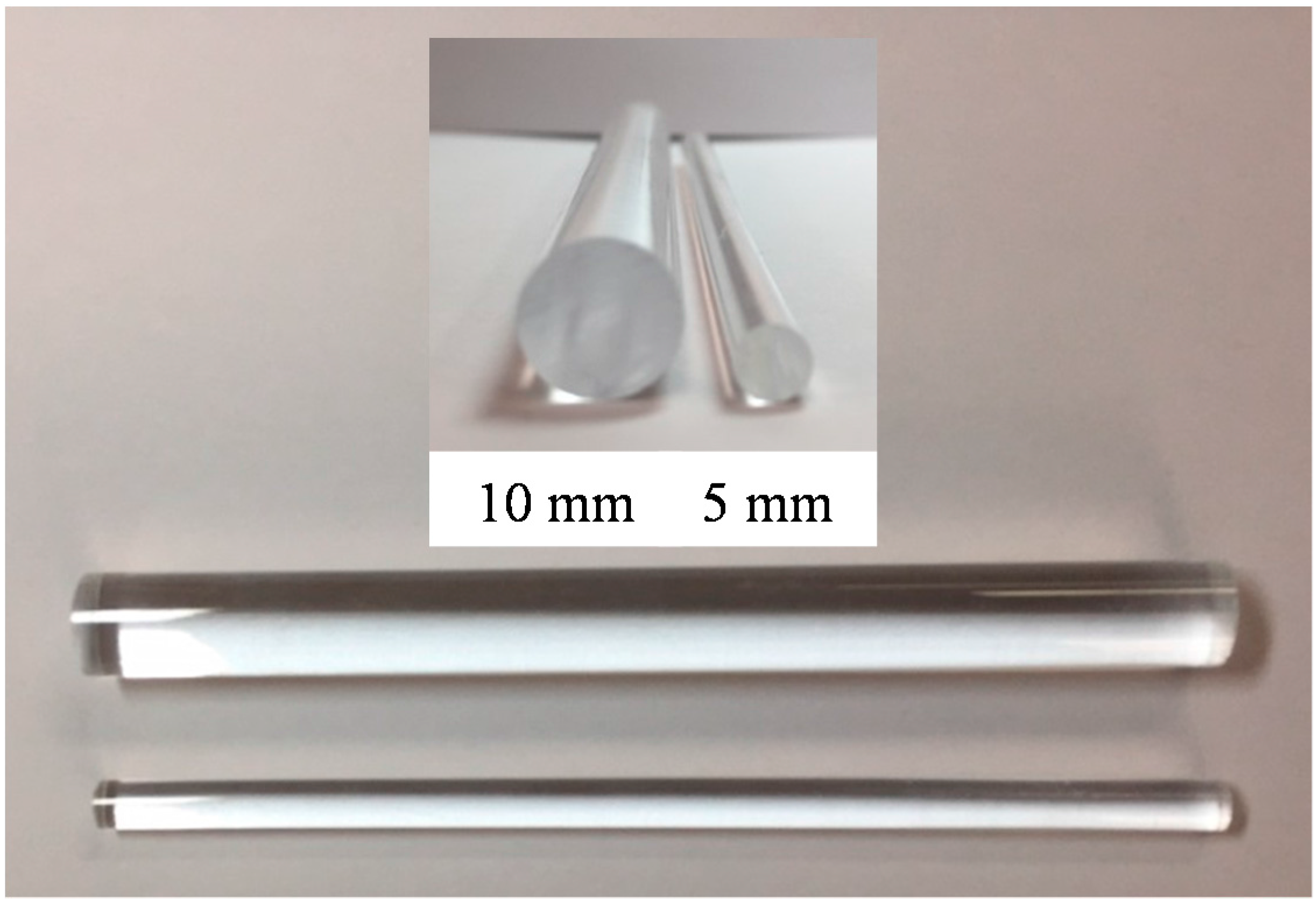
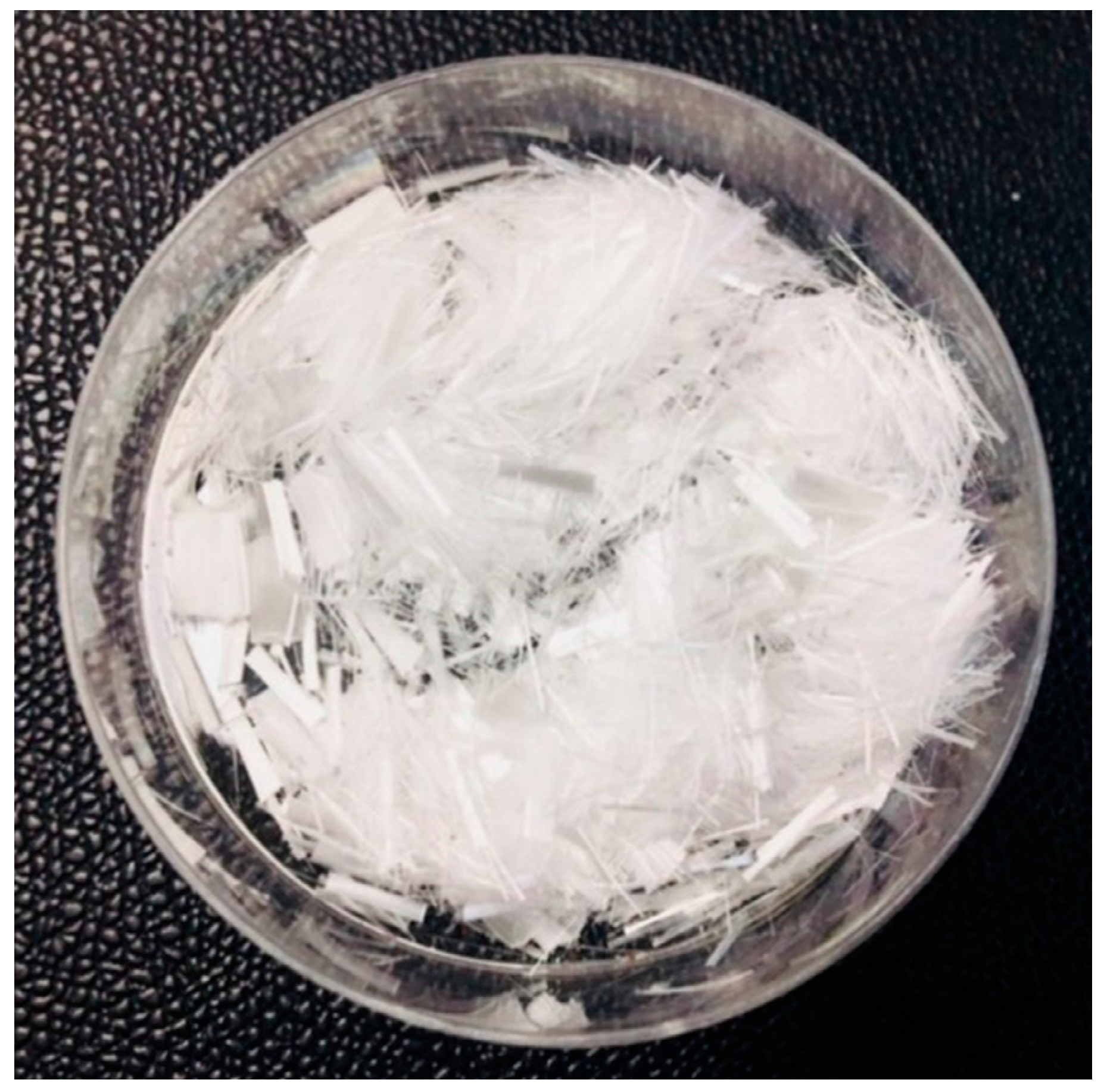
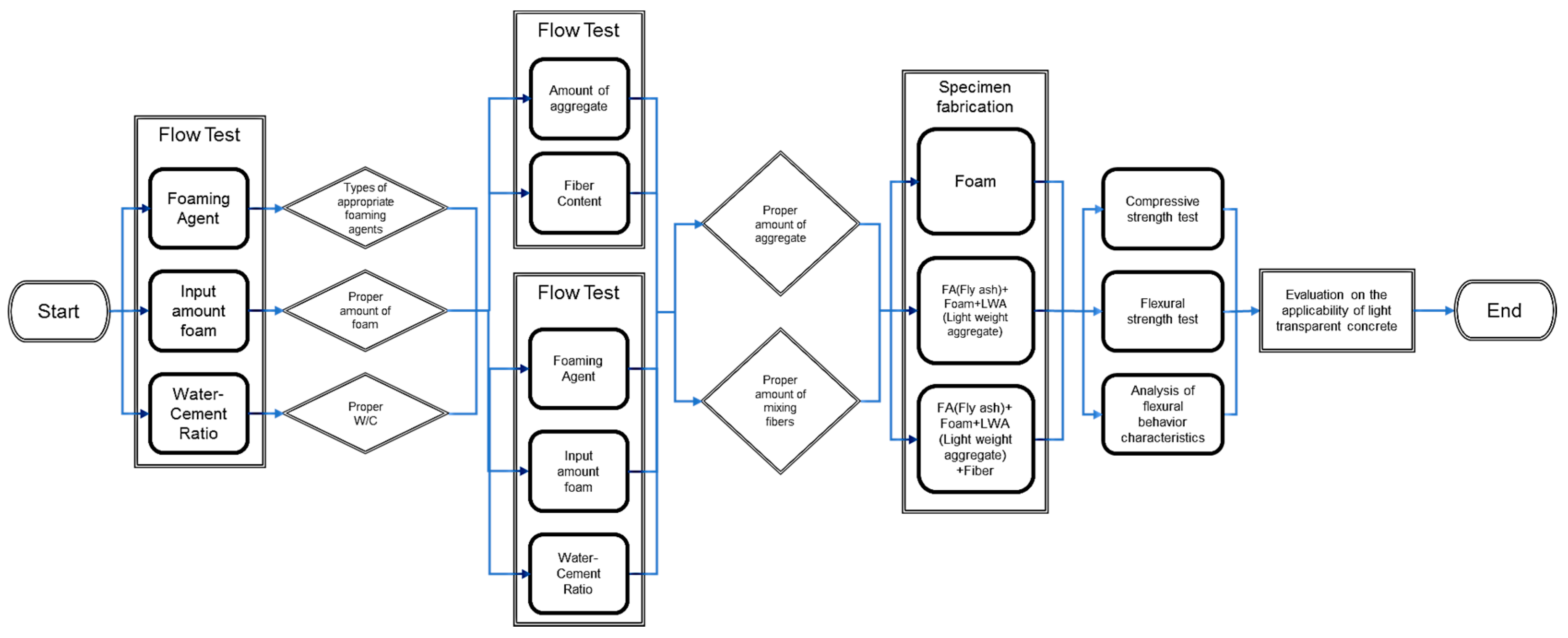
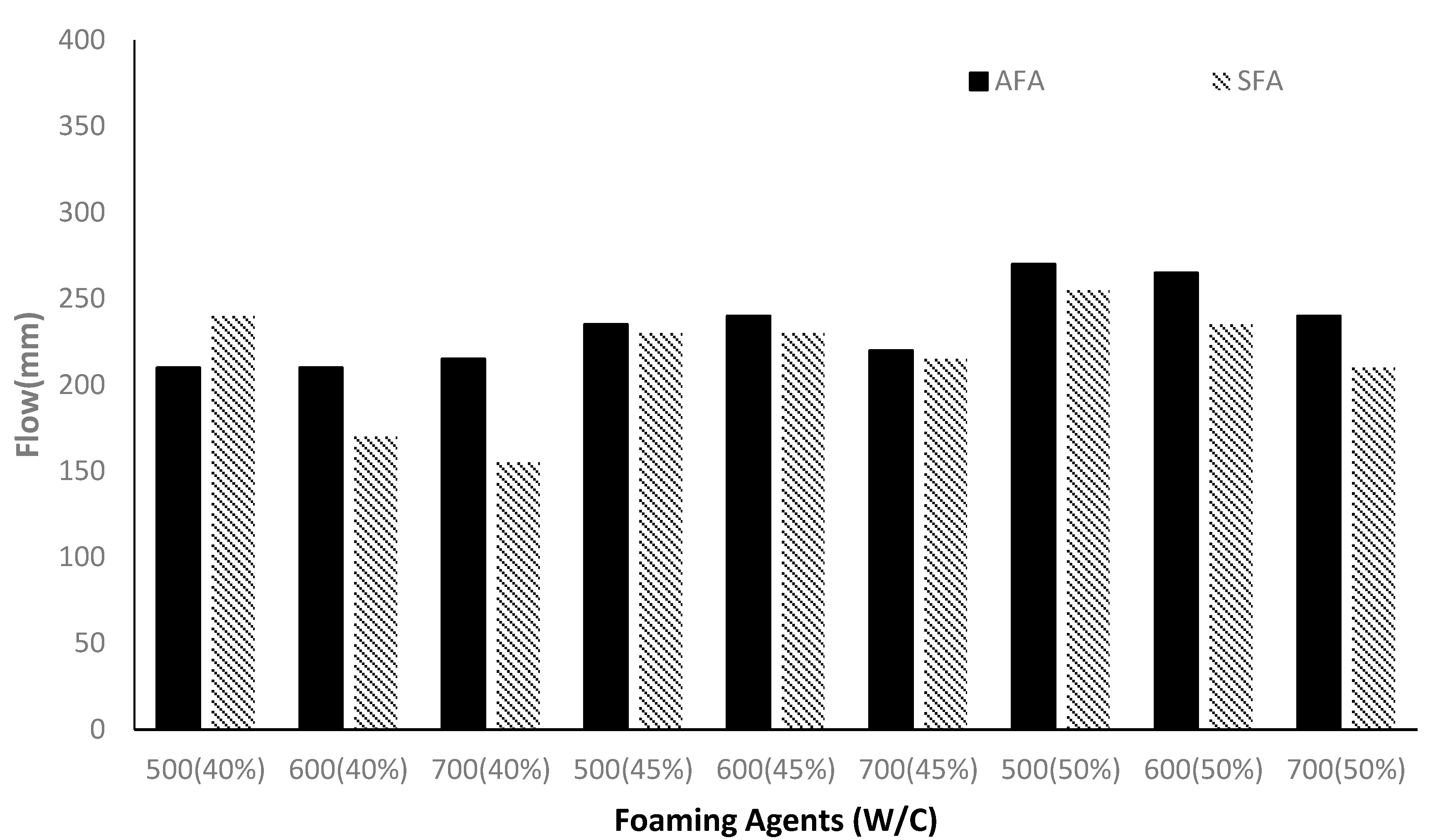
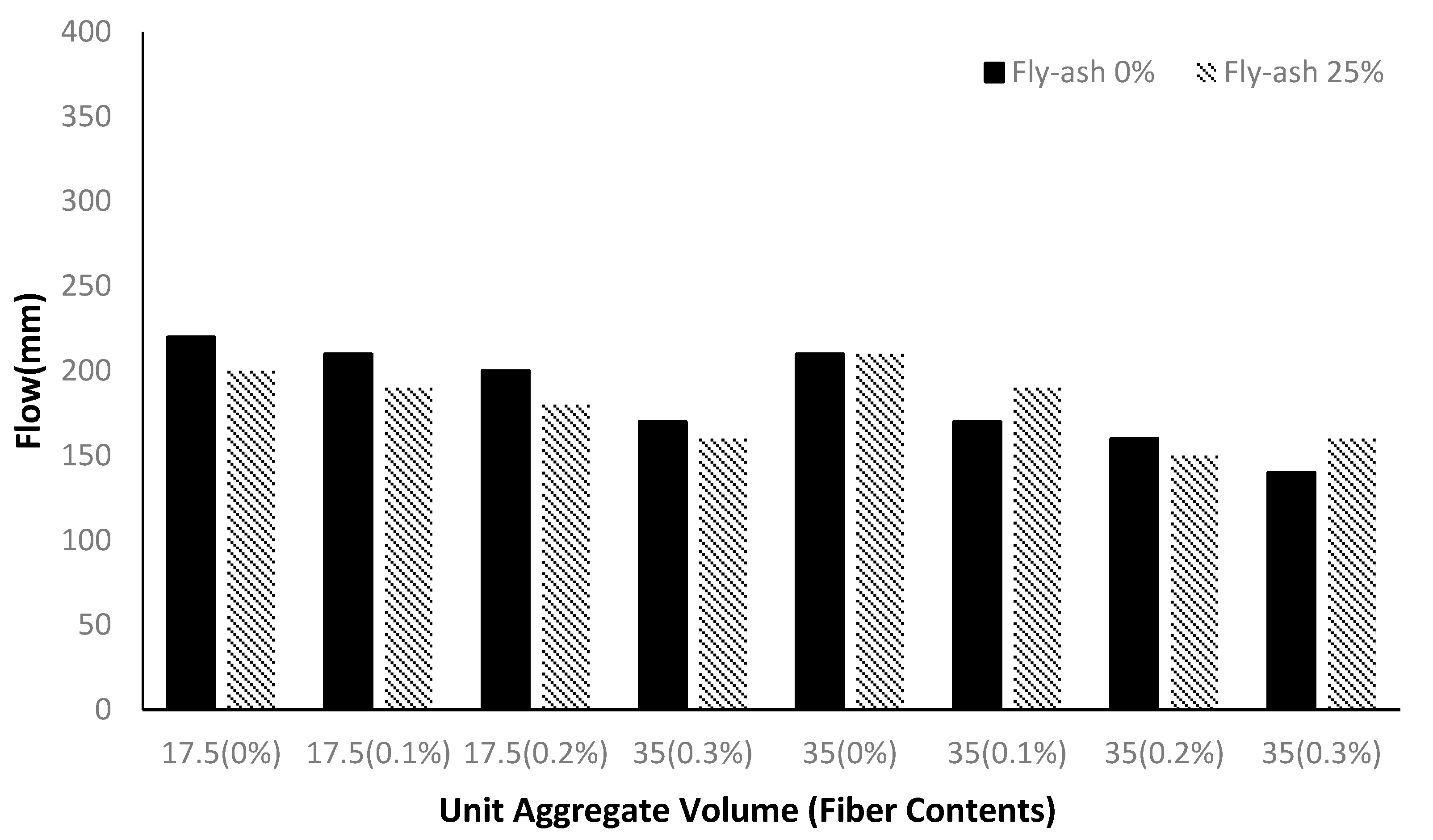
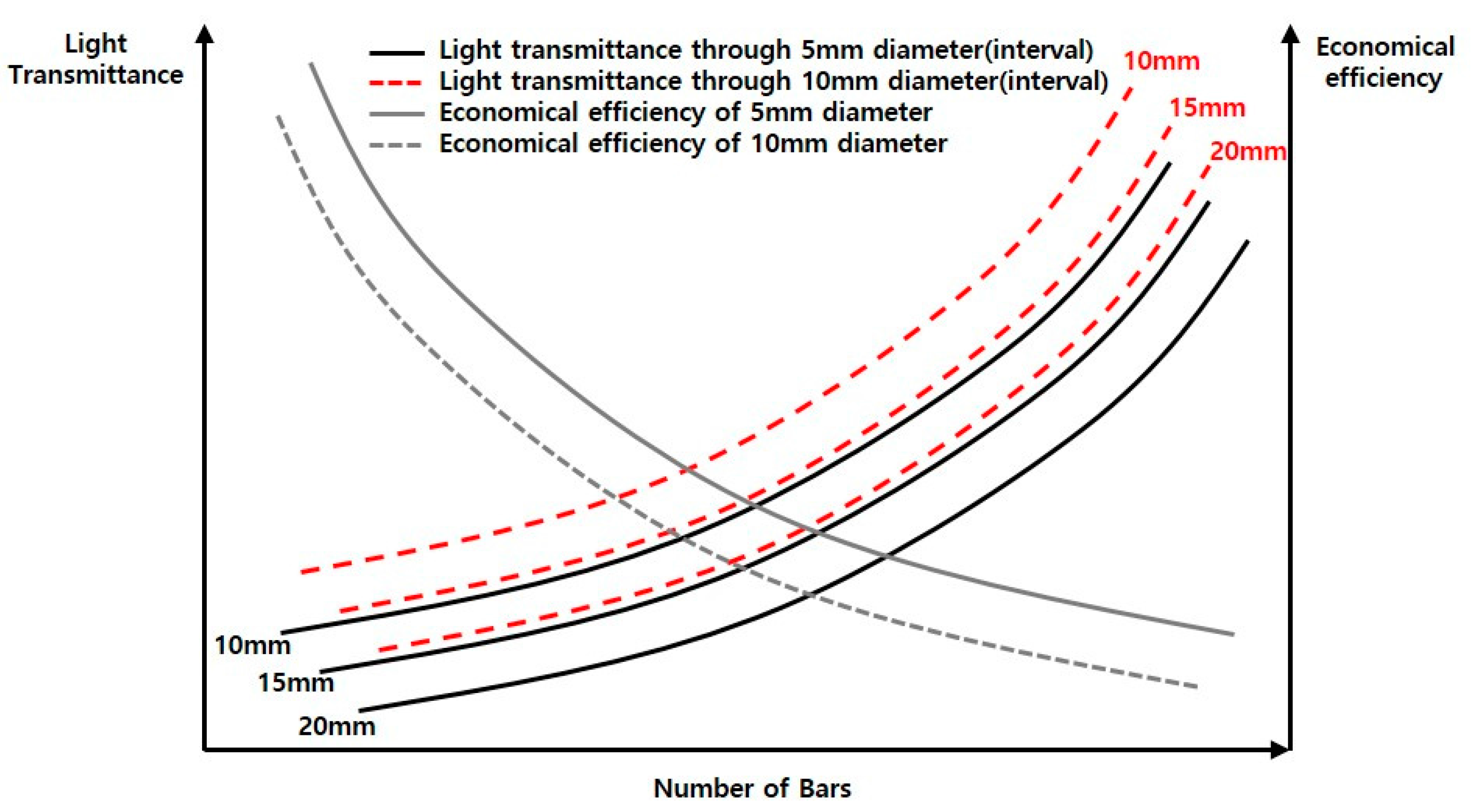
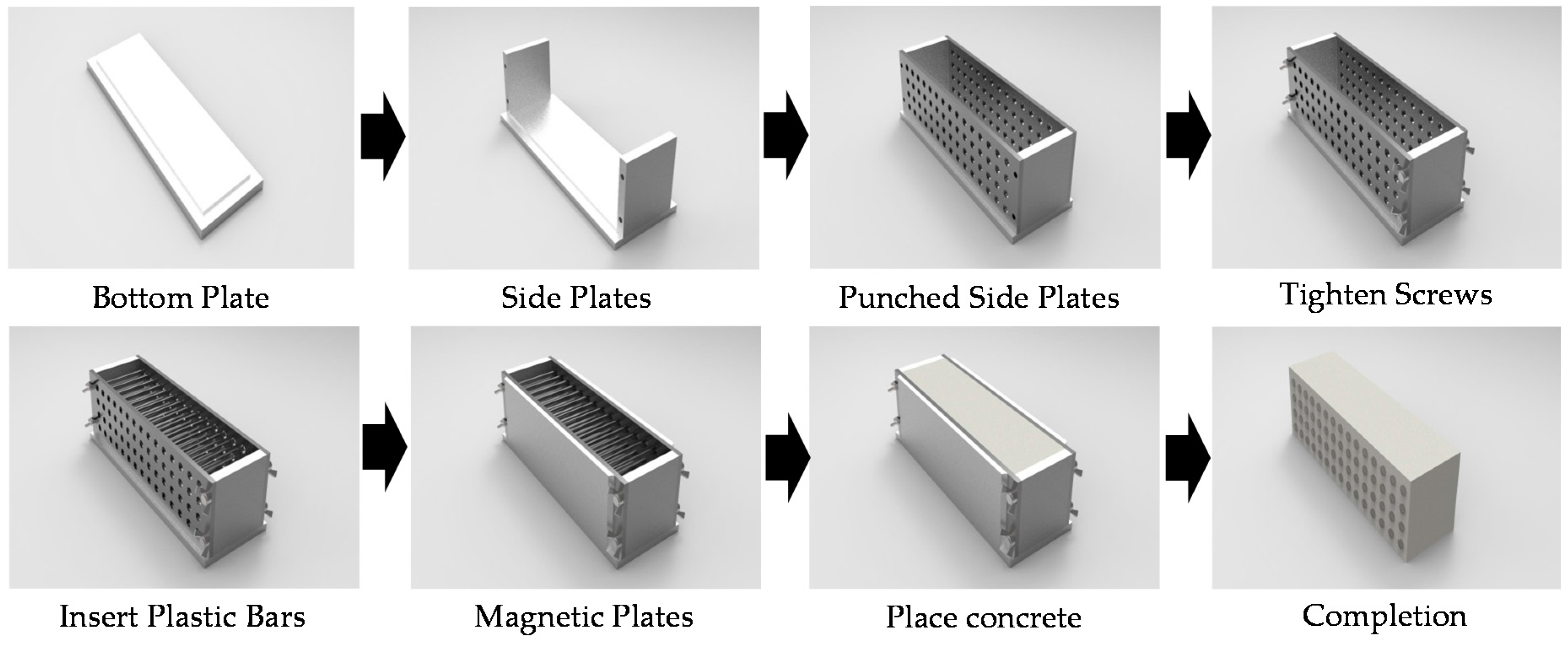

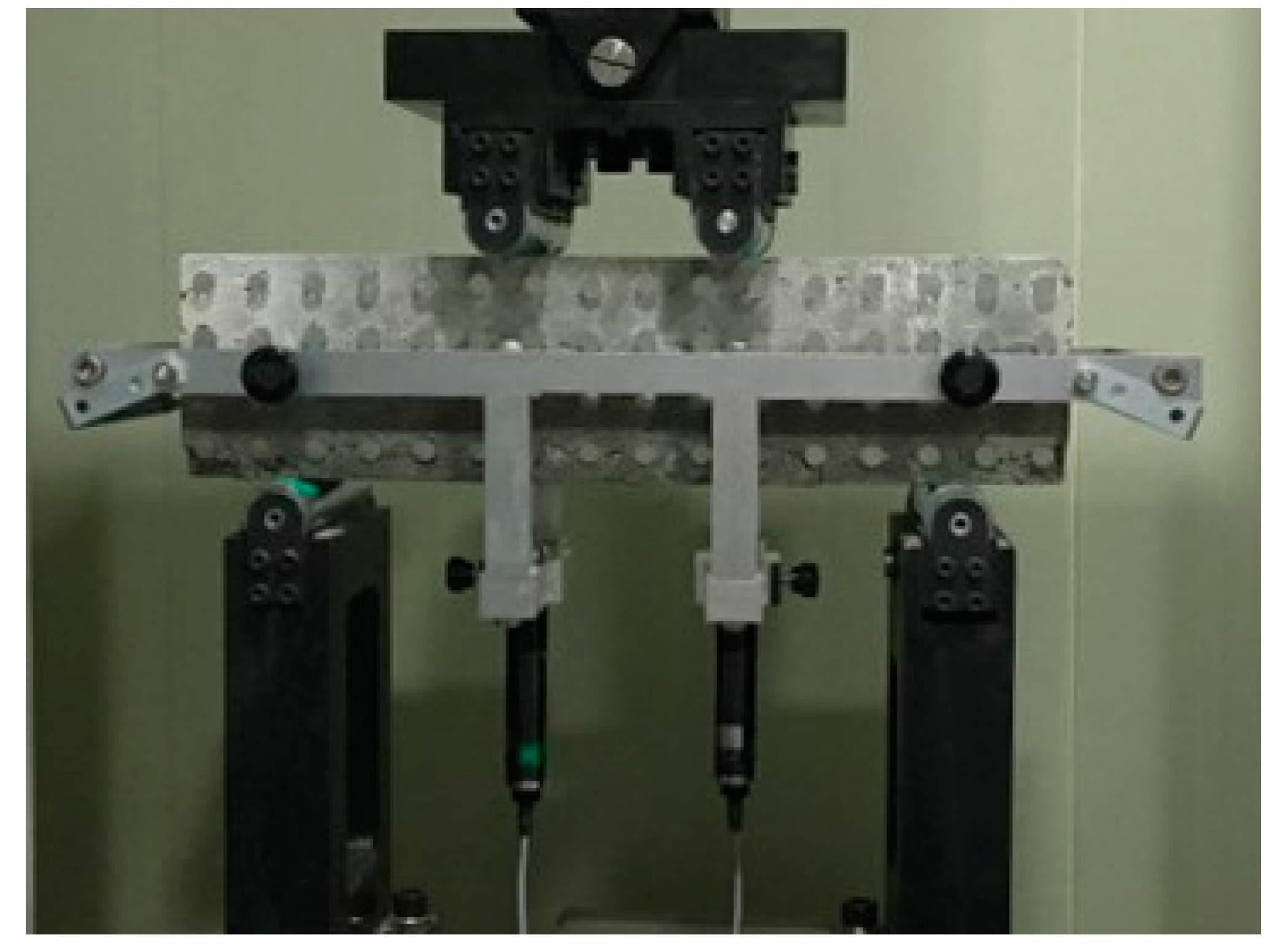
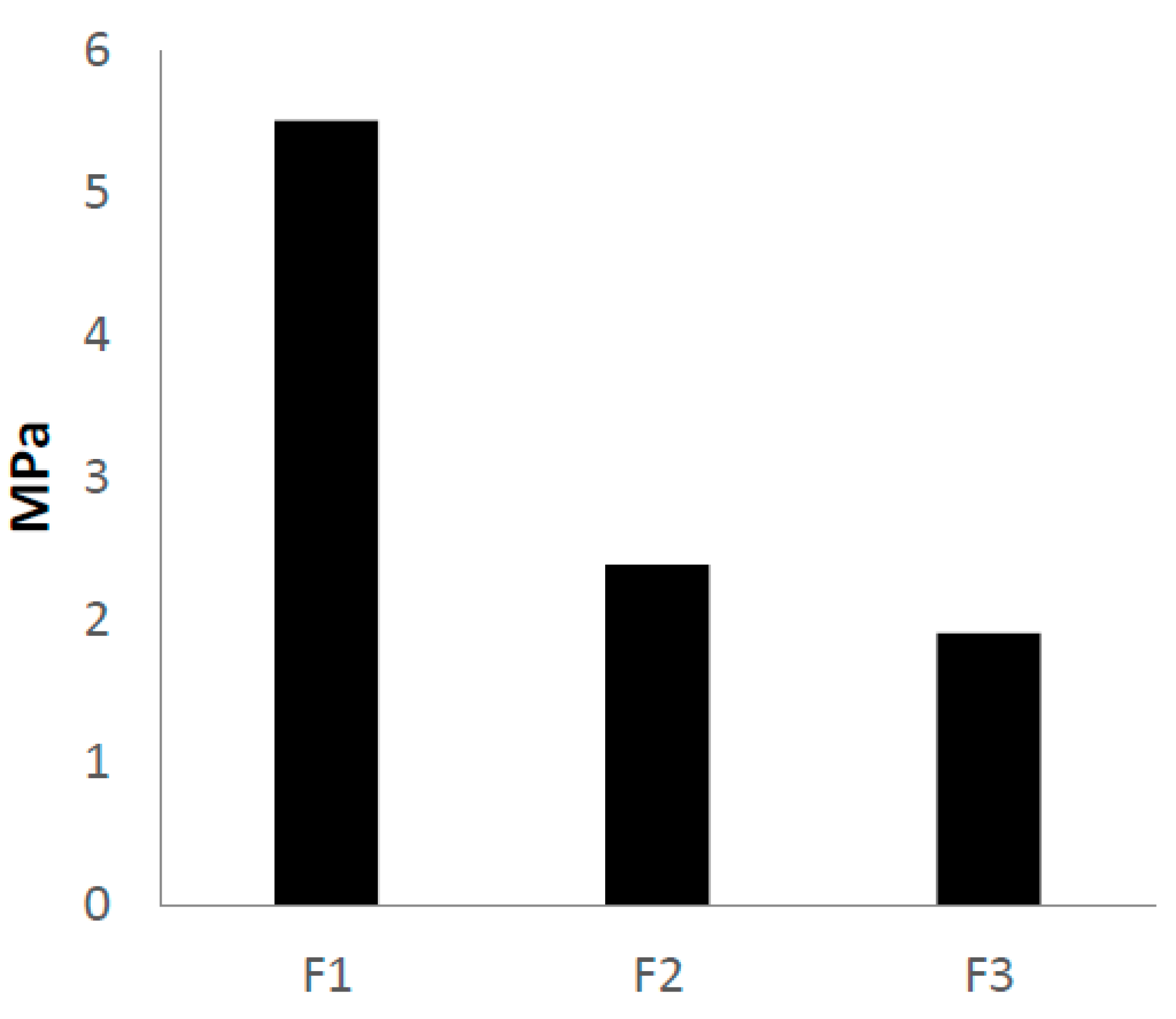
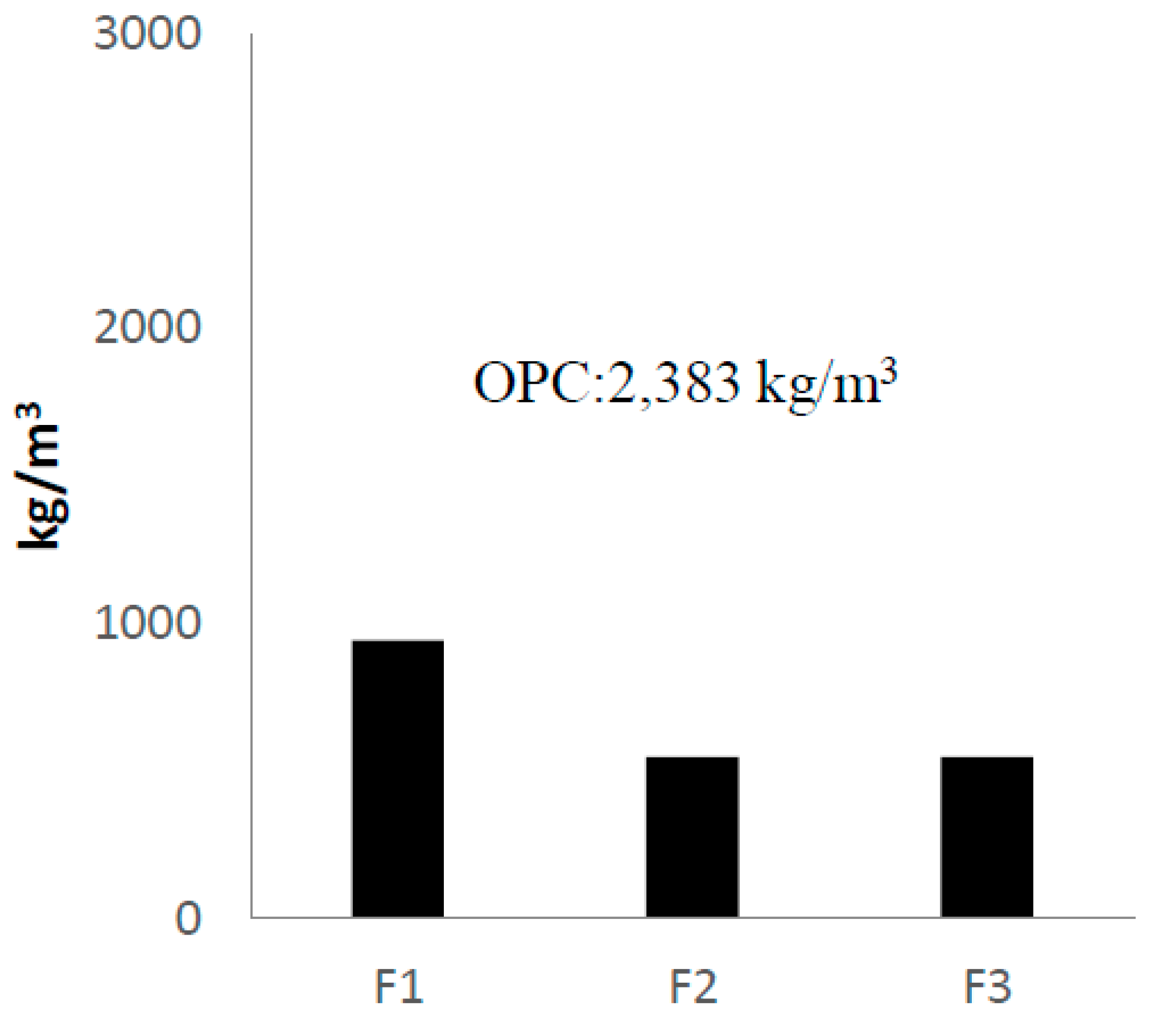
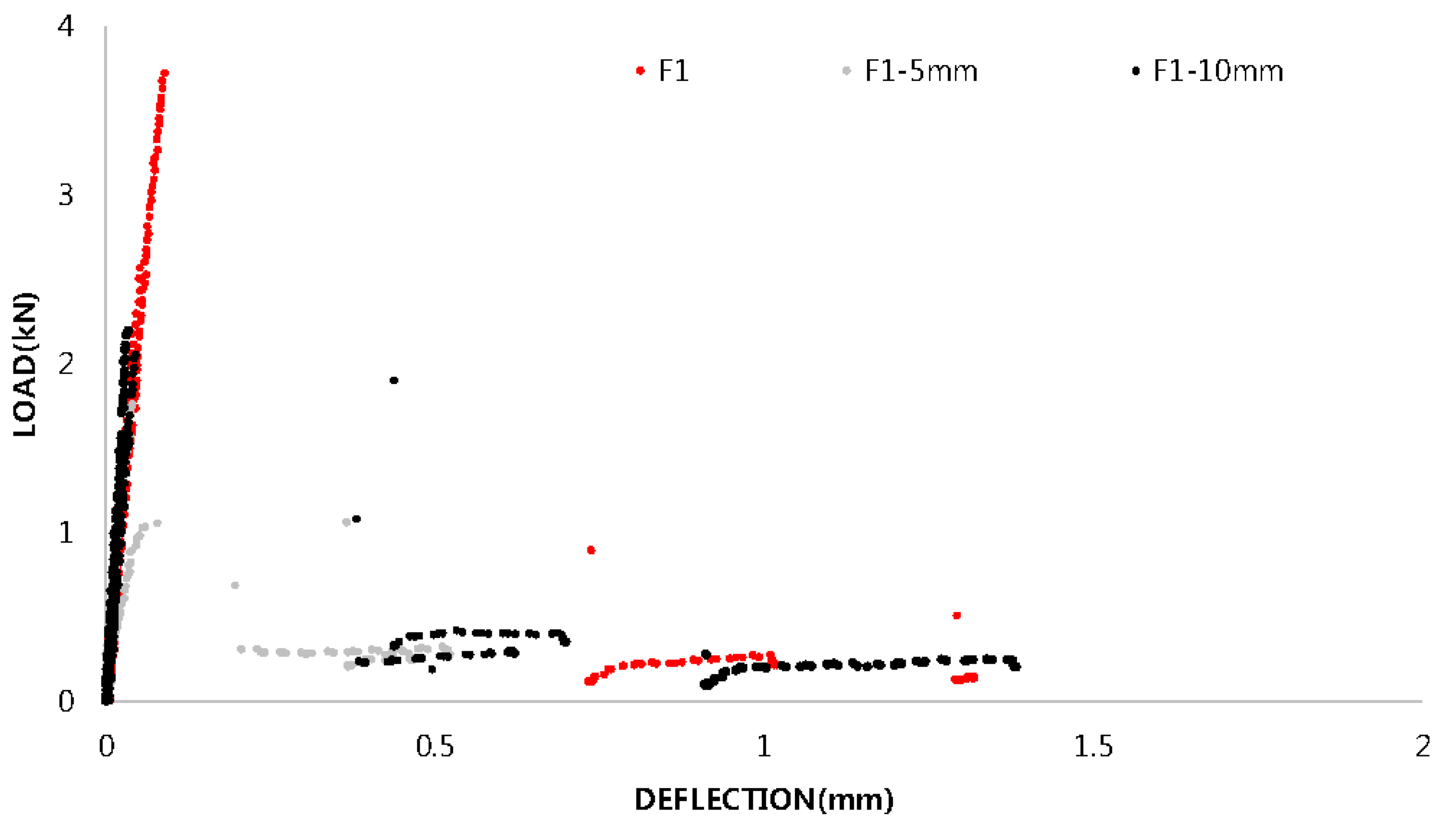
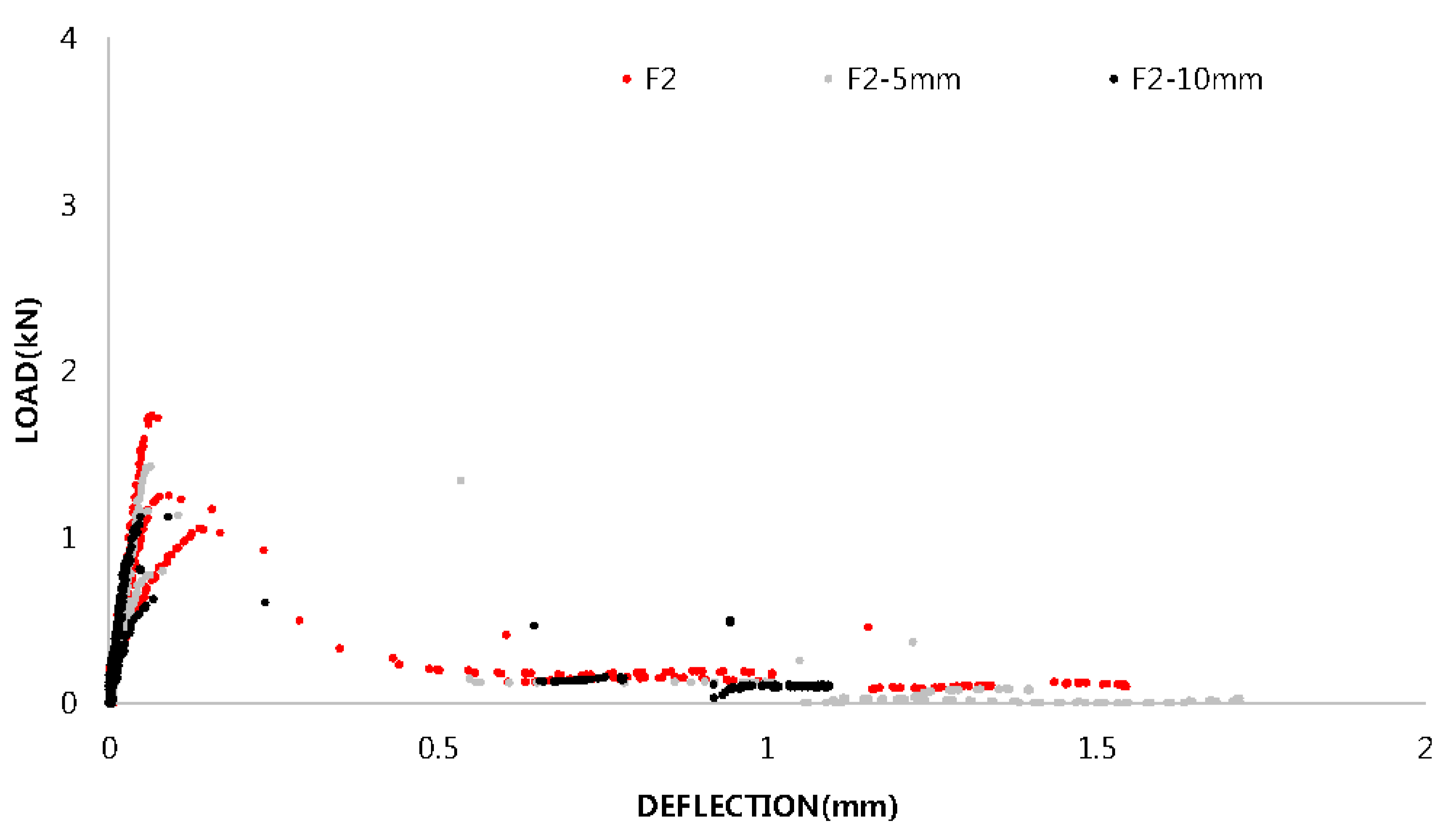
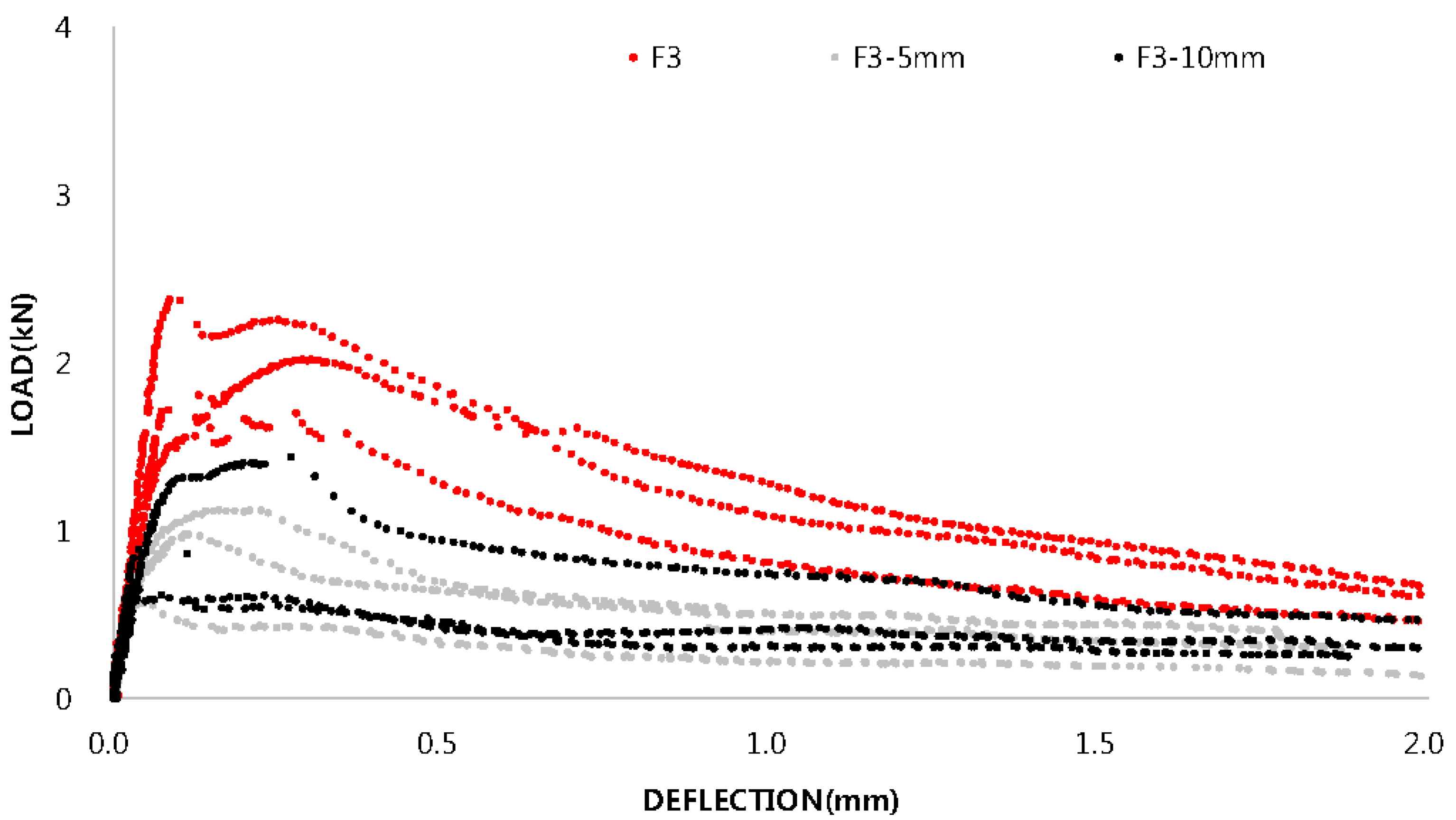

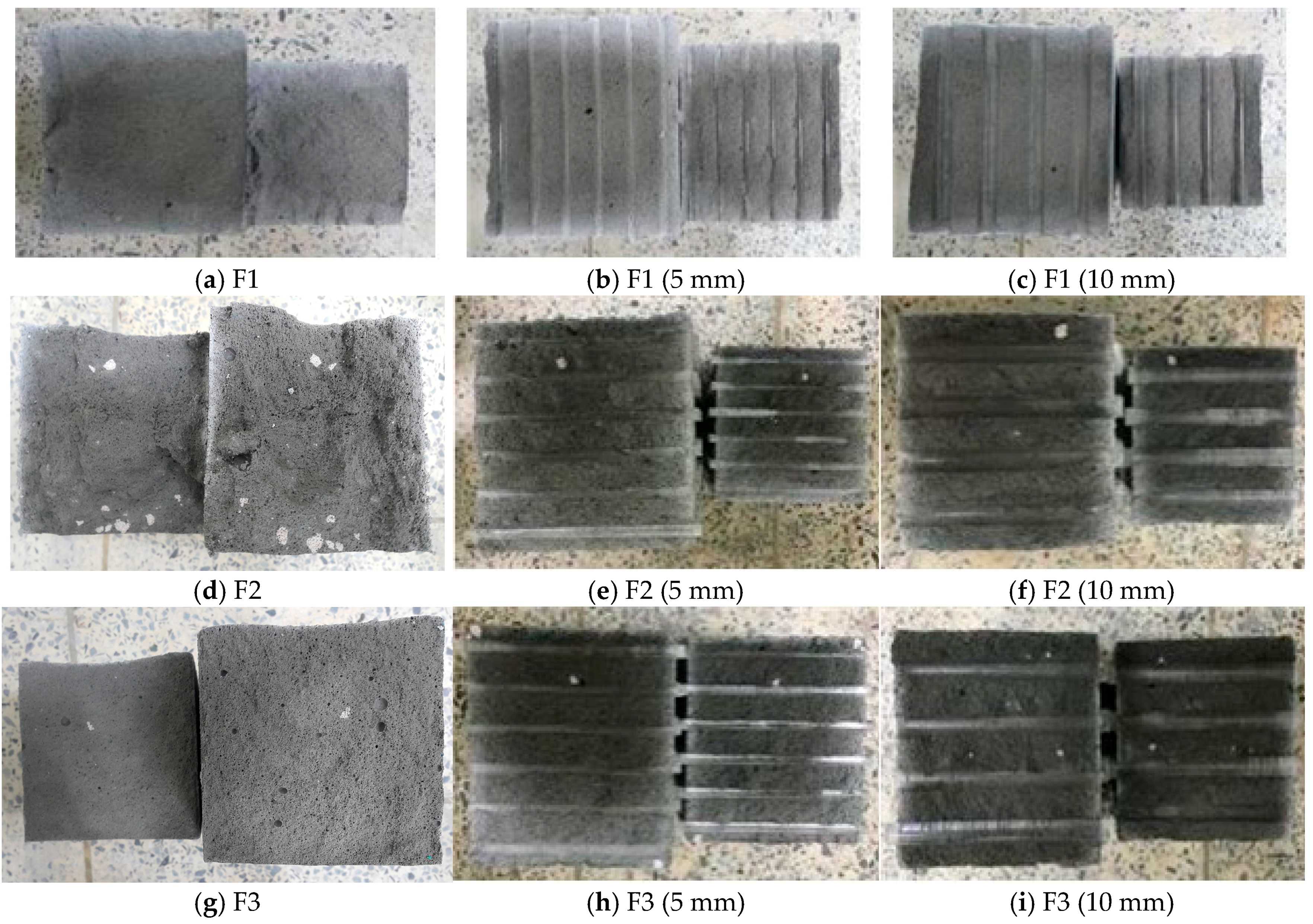
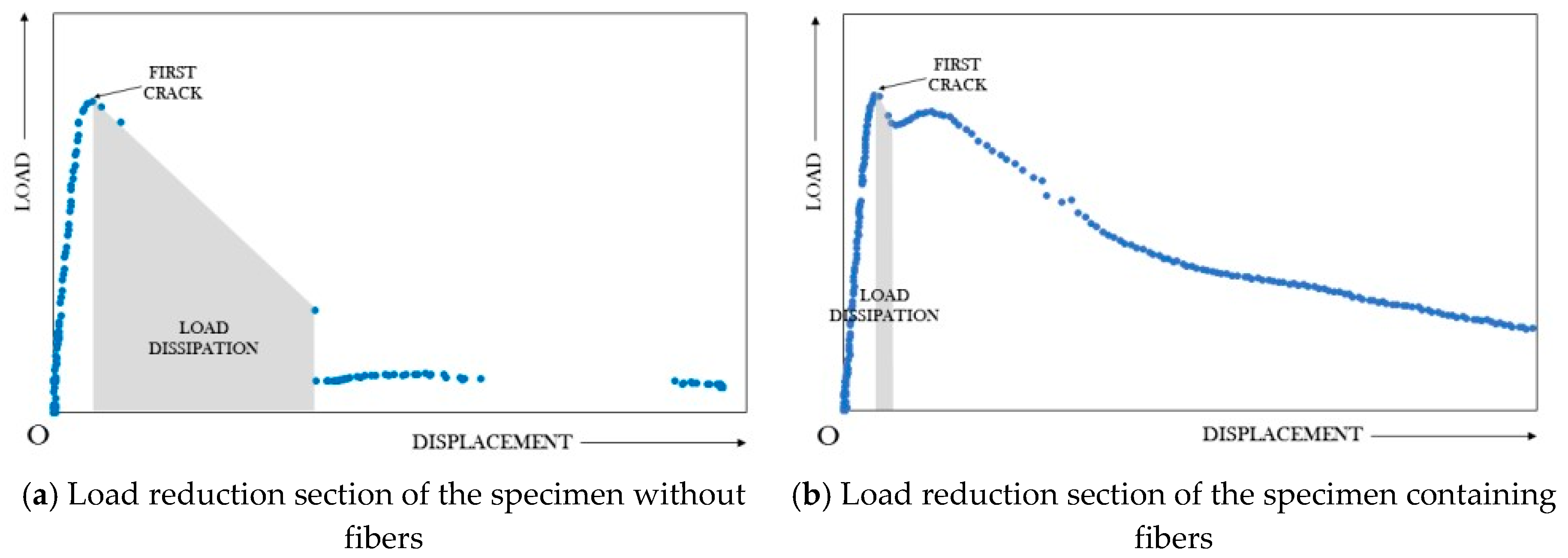

| Category | Lightweight Aggregate |
|---|---|
| Symbol | ALA (Autoclaved Lightweight Concrete Aggregate) |
| Specification | Crushed foam concrete |
| Specific gravity (kg/m3) | 0.60 |
| Maximum diameter (mm) | 8 |
| Photo | 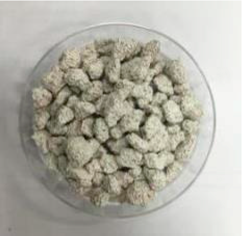 |
| Step | Experimental Content |
|---|---|
| Step 1 | Slump test according to the types of foaming agents, input amounts, and water-cement ratio changes |
| Step 2 | Slump test according to the input amounts of lightweight aggregates and presence of fly ash |
| Step 3 | Test of basic properties of specimens using the derived mix proportions (compressive strength, flexural strength) |
| Step 4 | Analysis of flexural behavior characteristics and analysis on the load transfer sections of light transparent concrete reinforced with fibers |
| No. | Specimen | W/C (%) | Unit Weight (kg/m3) | Foam (L/m3) | Fiber Volume (%) | Super Plasticizer (kg/m3) | |||||
|---|---|---|---|---|---|---|---|---|---|---|---|
| Water | Binder | Cement | Fly Ash | ALA | SFA | AFA | |||||
| 1 | SFA 50 (40%) | 40 | 278 | 222 | 222 | - | - | 500 | - | - | 1.40 |
| 2 | SFA 60 (40%) | 222 | 178 | 178 | 600 | 1.12 | |||||
| 3 | SFA 70 (40%) | 167 | 133 | 133 | 700 | 0.84 | |||||
| 4 | SFA 50 (45%) | 45 | 294 | 206 | 206 | 500 | 1.30 | ||||
| 5 | SFA 60 (45%) | 235 | 165 | 165 | 600 | 1.04 | |||||
| 6 | SFA 70 (45%) | 176 | 124 | 124 | 700 | 0.78 | |||||
| 7 | SFA 50 (50%) | 50 | 306 | 194 | 194 | 500 | 1.22 | ||||
| 8 | SFA 60 (50%) | 244 | 156 | 156 | 600 | 0.98 | |||||
| 9 | SFA 70 (50%) | 184 | 116 | 116 | 700 | 0.73 | |||||
| 10 | AFA 50 (40%) | 40 | 278 | 222 | 222 | - | - | - | 500 | - | 1.40 |
| 11 | AFA 60 (40%) | 222 | 178 | 178 | 600 | 1.12 | |||||
| 12 | AFA 70 (40%) | 167 | 133 | 133 | 700 | 0.84 | |||||
| 13 | AFA 50 (45%) | 45 | 294 | 206 | 206 | 500 | 1.30 | ||||
| 14 | AFA 60 (45%) | 235 | 165 | 165 | 600 | 1.04 | |||||
| 15 | AFA 70 (45%) | 176 | 124 | 124 | 700 | 0.78 | |||||
| 16 | AFA 50 (50%) | 50 | 306 | 194 | 194 | 500 | 1.22 | ||||
| 17 | AFA 60 (50%) | 244 | 156 | 156 | 600 | 0.98 | |||||
| 18 | AFA 70 (50%) | 184 | 116 | 116 | 700 | 0.73 | |||||
| 19 | LWA25 | 45 | 176 | 124 | 124 | 0 | 175 | 525 | - | 0 | 0.78 |
| 20 | LWA25 (0.1%) | 0.1 | |||||||||
| 21 | LWA25 (0.2%) | 0.2 | |||||||||
| 22 | LWA25 (0.3%) | 0.3 | |||||||||
| 23 | LWA50 | 350 | 350 | - | 0 | ||||||
| 24 | LWA50 (0.1%) | 0.1 | |||||||||
| 25 | LWA50 (0.2%) | 0.2 | |||||||||
| 26 | LWA50 (0.3%) | 0.3 | |||||||||
| 27 | FALWA25 | 170 | 130 | 98 | 33 | 175 | 525 | - | 0 | 0.76 | |
| 28 | FALWA25 (0.1%) | 0.1 | |||||||||
| 29 | FALWA25 (0.2%) | 0.2 | |||||||||
| 30 | FALWA25 (0.3%) | 0.3 | |||||||||
| 31 | FALWA50 | 350 | 350 | - | 0 | ||||||
| 32 | FALWA50 (0.1%) | 0.1 | |||||||||
| 33 | FALWA50 (0.2%) | 0.2 | |||||||||
| 34 | FALWA50 (0.3%) | 0.3 | |||||||||
| Type | Specimen | W/C Ratio (%) | Water (kg/m3) | Binder (kg/m3) | Cement (kg/m3) | Fly Ash (kg/m3) | Lightweight Aggregate (kg/m3) | Foam (L/m3) | Fiber Contents (%) | Bar Space (mm) | Bar Diameter (mm) |
|---|---|---|---|---|---|---|---|---|---|---|---|
| Foam | F1 | 45 | 294 | 206 | 206 | - | - | 500 | - | 10 | 5, 10 |
| Fly ash + Foam + Lightweight Aggregate | F2 | 45 | 170 | 131 | 98 | 33 | 175 | 525 | - | 10 | 5, 10 |
| Fly ash + Foam + Lightweight Aggregate + Fiber | F3 | 45 | 170 | 131 | 98 | 33 | 175 | 525 | 2 | 10 | 5, 10 |
| Bar Diameter (mm) | Specimen | Load Dissipation Area (kN * mm) | Load Reduction Area Average | Load Re-Raised Area (kN * mm) | Section Where Load Increases Average | Load Transfer Factor |
|---|---|---|---|---|---|---|
| No bars | 1 | 0.16 | 0.07 | 0.25 | 0.30 | 1.57 |
| 2 | 0.05 | 0.21 | 4.19 | |||
| 3 | 0 | 0.44 | ∞ | |||
| 5 mm | 1 | 0 | 0.01 | 0 | 0.09 | ∞ |
| 2 | 0.04 | 0.07 | 2 | |||
| 3 | 0 | 0.19 | ∞ | |||
| 10 mm | 1 | 0.46 | 0.18 | 0.26 | 0.13 | 0.56 |
| 2 | 0.06 | 0.05 | 0.78 | |||
| 3 | 0.02 | 0.07 | 4.03 |
© 2018 by the author. Licensee MDPI, Basel, Switzerland. This article is an open access article distributed under the terms and conditions of the Creative Commons Attribution (CC BY) license (http://creativecommons.org/licenses/by/4.0/).
Share and Cite
Kim, B.; Han, Y.-J. Flexural Performance of Transparent Plastic Bar Reinforced Concrete. Appl. Sci. 2018, 8, 325. https://doi.org/10.3390/app8030325
Kim B, Han Y-J. Flexural Performance of Transparent Plastic Bar Reinforced Concrete. Applied Sciences. 2018; 8(3):325. https://doi.org/10.3390/app8030325
Chicago/Turabian StyleKim, Byoungil, and Yoon-Jung Han. 2018. "Flexural Performance of Transparent Plastic Bar Reinforced Concrete" Applied Sciences 8, no. 3: 325. https://doi.org/10.3390/app8030325





